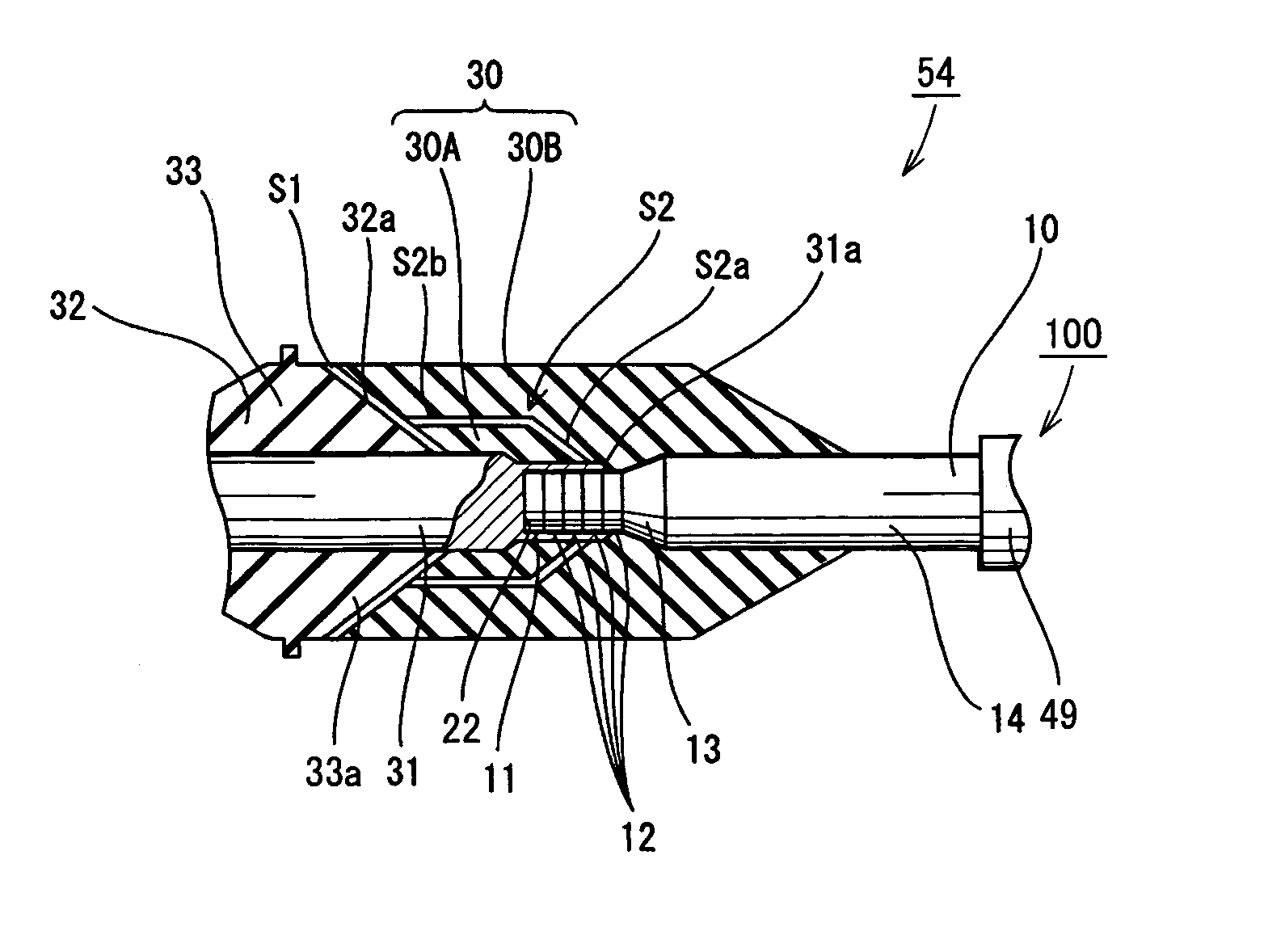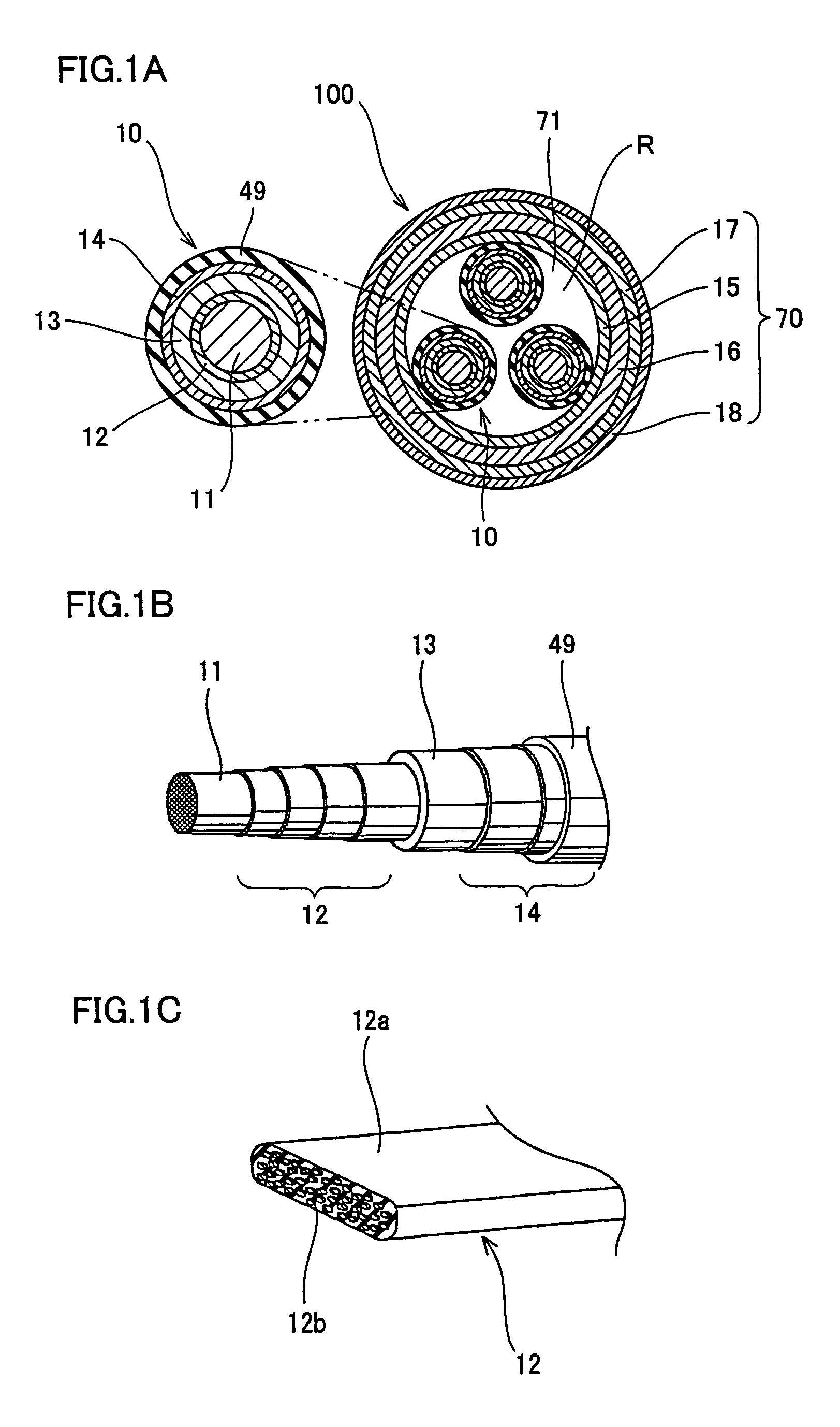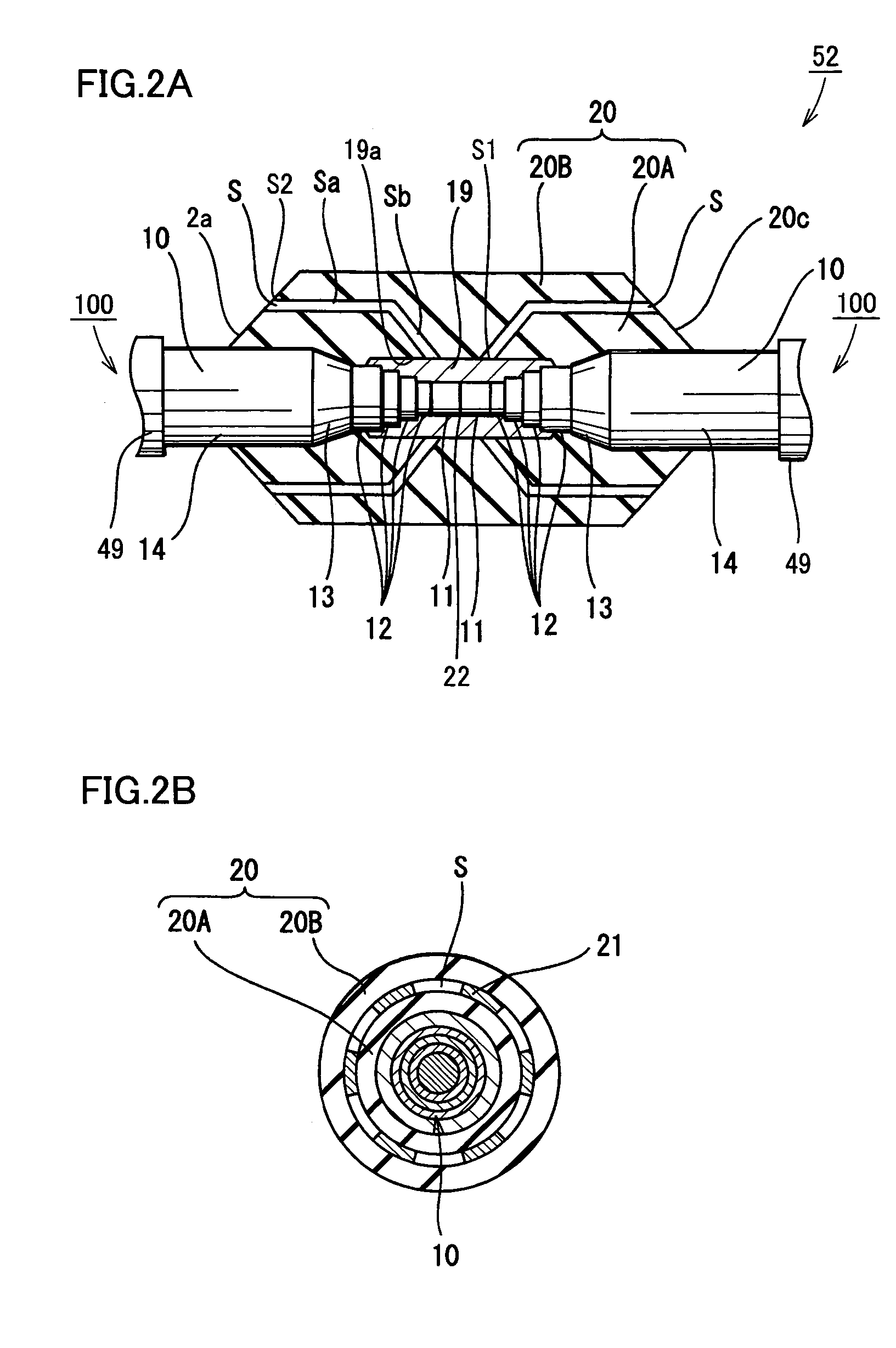Superconducting cable joint structure
- Summary
- Abstract
- Description
- Claims
- Application Information
AI Technical Summary
Benefits of technology
Problems solved by technology
Method used
Image
Examples
first embodiment
[0054]With reference to FIG. 2A, the present embodiment provides a superconducting cable joint structure 52. More specifically, two opposite cable cores 10 have their respective formers 11 and superconducting layers 12 each exposed stepwise so that they can be connected to conductor connection sleeve 19. Formers 11 abuts against each other and conductor connection sleeve 19, formed in a cylinder of metal (e.g., copper, aluminum or the like), is externally fitted and connected to establish a conductor connection 22.
[0055]Conductor connection sleeve 19 and superconducting layer 12 are electrically connected for example with solder, and conductor connection sleeve 19 and former 11 are compression-connected.
[0056]Conductor connection sleeve 19 is covered with first and second, coolant impregnated papers 20A and 20B wound therearound to serve as a joint insulation layer 20. As well as insulation layer 13, the first and second coolant impregnated papers 20A and 20B may also be formed of p...
second embodiment
[0064]With reference to FIG. 3, the present embodiment differs from the first embodiment in that while the present embodiment provides a superconducting cable joint structure 53 including a joint insulation layer 20′ having a coolant path S′ extending along cable core 10, as seen longitudinally, and communicating at a portion adjacent to conductor connection sleeve 19.
[0065]Coolant path S′ has a horizontal portion Sa′ communicating an end Sf′ to coolant layer R, an inclined portion Sb′ communicating with horizontal portion Sa′ and having an end adjacent to conductor connection sleeve 19 at radially outer surface 19a, a horizontal portion Sd′ communicating an end Sg′ to coolant layer R, an inclined portion Se′ communicating with horizontal portion Sd′ and having an end adjacent to sleeve 19 at surface 19a, and a communication portion Sc′ allowing opposite inclined portions Sb′ and Se′ to have their respective ends communicating with each other.
[0066]More specifically, conductor conne...
third embodiment
[0069]In the present embodiment will be described a structure jointing together a terminal of a superconducting cable and a resin unit employed to secure a normal conducting cable.
[0070]With reference to FIG. 4, the present embodiment differs from the first embodiment in that the present embodiment provides a superconducting cable joint structure 54 connecting the superconducting cable 100 cable core 10 to a conductor 31 of a resin unit 33 employed to secure a normal conducting cable to an external member.
[0071]In resin unit 33 conductor 31 formed of aluminum or copper is surrounded by a securing portion of insulator 32 formed of epoxy resin in the form of a rhomboid as seen in cross section. Securing portion of insulator 32 has an end with conductor 31 protruding and thus exposed, and having an end, connection portion 31a, which is externally fitted on and thus connected to superconducting layer 12 of cable core 10.
[0072]An outer surface of connection portion 31a, which serves as a...
PUM
| Property | Measurement | Unit |
|---|---|---|
| Temperature | aaaaa | aaaaa |
| Circumference | aaaaa | aaaaa |
| Superconductivity | aaaaa | aaaaa |
Abstract
Description
Claims
Application Information
 Login to View More
Login to View More - R&D
- Intellectual Property
- Life Sciences
- Materials
- Tech Scout
- Unparalleled Data Quality
- Higher Quality Content
- 60% Fewer Hallucinations
Browse by: Latest US Patents, China's latest patents, Technical Efficacy Thesaurus, Application Domain, Technology Topic, Popular Technical Reports.
© 2025 PatSnap. All rights reserved.Legal|Privacy policy|Modern Slavery Act Transparency Statement|Sitemap|About US| Contact US: help@patsnap.com



